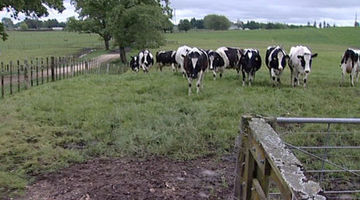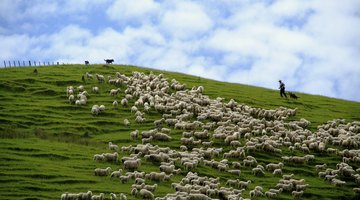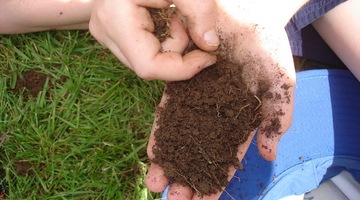

Biogeochemistry is a big word. Biogeochemistry also covers an enormous field of study. It is a systems science – a way of looking at how the Earth’s systems (water, atmosphere, land and living ...
READ MORE

Positions: Professor – Lincoln University, Principal Scientist – AgResearch, Chief Scientist – National Science Challenge: Our Land and Water. Field: Soil and water quality. Professor Richard ...
READ MORE

Dr Richard McDowell from AgResearch at Invermay is concerned about phosphorus being lost from the soil and causing water pollution via eutrophication. Rights: Farming Futures UK Phosphate ...
READ MORE

In this activity, students explore ethical issues related to farming and environmental pollution. They learn about the science involved and the range of perspectives among stakeholders. By the ...
READ MORE

In this activity, students play a card game that models the journey of a male pea crab (a parasite of green-lipped mussels) from his mussel host and back again. Purpose This activity will help ...
READ MORE

In this activity, students measure the pH of soil collected from a paddock. This will be used to estimate the amount of agricultural lime needed to promote good grass growth. By the end of this ...
READ MORE

Be part of a worldwide movement and use Global Earth Challenge to submit or classify photos to help our planet’s environment and human health. Global Earth Challenge is a citizen science campaign ...
READ MORE

Earthworms are useful indicators of soil health. This project aims to capture information on earthworm abundance and species distribution throughout New Zealand. Information provided will be used ...
READ MORE

This comprehensive worldwide online citizen science (OCS) project collates bird species, numbers, locations and times of sightings into a large database. You can create a class as a user and, by ...
READ MORE

Students carry out a practical investigation to help AgResearch scientists monitor the spread of Microctonus aethiopoides (a tiny wasp) and its success as a biocontrol agent for clover root ...
READ MORE

Students investigate silage production and test a stream to see if run-off from silage is polluting it. Students then produce a pamphlet of their findings to educate the community. Purpose To ...
READ MORE

Introduced plant species – friend or foe? This might depend on who is answering the question. Over 25,000 exotic plants have been introduced to Aotearoa New Zealand. Some of these are highly ...
READ MORE
Dr Ross Monaghan from AgResearch at Invermay in Otago explains the importance of phosphorus and then talks us through phosphorus cycle. Jargon alert Ross mentions that phosphorous is adsorbed to ...
READ MORE
Val Orchard from ERMA explains how new organisms are sometimes used in New Zealand to control the levels of other organisms. (Note: ERMA was disestablished in June 2011 and its functions were ...
READ MORE
Professor Louis Schipper from Waikato University is a soil biogeochemist. He explains the meaning of the term ‘biogeochemistry’ and what it has to do with the cycling of elements and nutrients in ...
READ MORE

An interactive showing the main components of the terrestrial nitrogen cycle. Select one of the buttons to find out more. Go here to view the full transcript and copyright information.
READ MORE

This timeline explores the history and science of mammalian pest control in New Zealand. A full transcript is underneath the timeline.
READ MORE

This interactive provides a quick start guide with key information to get started playing and facilitating Kiwi Kai’s virtual farm. We recommend starting with the Quick start guide. Select here ...
READ MORE